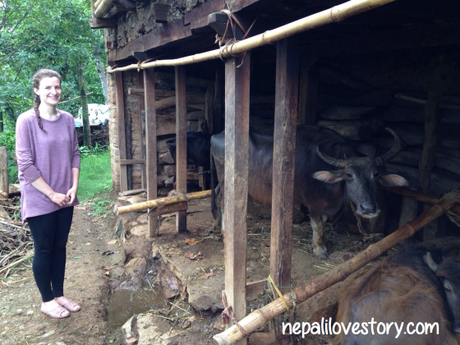So you are thinking about learning Nepali? Whether it is for your partner, your job or your interest you may want to consider these tips and hints before you go full steam ahead.(These might also help for anyone interested in learning a similar language, e.g. Hindi)
1. Why do you want to learn Nepali and whose Nepali do you want to learn?
Nepali is spoken by less than half of the population of Nepal. It is not as standardized as languages that are more widely spoken (Hindi) or have been around longer (English). Due to this, you will have many different people telling you contradicting things. This is why it is best to decide whose Nepali you want to speak.
If you are learning to further your career then your company may have certain material in mind for you and want you to speak a fairly formal version of Nepali. However, if your partner or friends speak Nepali they may speak in a more colloquial and less standard way. This is particularly true depending on caste (unfortunately), however different castes have traditionally had different languages as mother tongues. Thus, if your partner is a Brahmin (whose caste originally spoke Nepali) then you can be sure you will be required to speak a ‘correct’ version of Nepali.

Scroll down for more information on which materials to use!
2. Writing vs. speaking
This is the age old debate in any language whether a beginner should first learn how to speak or first learn how to read.
Again, it depends on what you want to use Nepali for. Many people will recommend you to starting learning to read and write in the Devanagari script. This is a huge bonus as you will be able to sound out words from the script with the correct pronunciations as you will be more aware of different vowel sounds, aspirations and nasalizations.
This approach is incredibly time consuming – but not impossible. Although, it is just as practical to learn to speak Nepali without being able to read and write, you can always just write in Romanized script: mero naam hanna ho instead of मेरो नाम हन हो .
After some months of labouring over the Devanagari script, I decided to just focus on learning to speak Nepali, as for me, this was immediately important. I still have an awareness of the script and can read words but nothing more complex.
3. How much do you want to learn?
No language is ‘easy’ to learn, unless you are a baby and then it just comes naturally! But as Nepali is dissimilar to English, learning does require more time than if you were learning French. It has a different script, different sounds, different grammar… in fact, everything is different from English.
You may need less hours to learn if you are a language wiz (which I am not) or have knowledge of a similar language e.g. Hindi, Marathi, Bengali etc.
Just make sure you want to put in the hours before you start!
4. To immerse or not to immerse?
The best advice to a language learner is immersion in the language. This may be slightly easier with other ‘popular’ foreign languages that have a large amount of learners but this is not the case with Nepali. There is minimal Nepali material (films, tv, media) to learn from – especially if you are not learning the script!
I decided to put all things Nepali aside until I arrived in Nepal. Immersing myself in Nepal was the best thing I’ve ever done to learn the language. I had speaking classes for a couple of hours every day and then had the whole country to practice in. In Nepali, very few people speak English so I was forced to speak Nepali (as much as I hated it!).
If you can, immerse yourself! If you are not able to go to Nepal then definitely ban English with your partner/friends/language partner and try to converse solely in Nepali!

No English speakers here!
5. Which materials to use?
For the in depth learner: A good all round book to learn Nepali is Complete Nepali: Teach Yourself by Michael Hutt. The book also comes with a CD so you can hear pronunciations. It also progresses in the script so unless you are learning script it will be difficult to use. However, the first pages on the grammar, alphabet, how to compose words words and the detail of the Romanised Nepali is phenomenal and highly accurate. It makes a good base for anyone interested in learning the language!
For quick knowledge: You can supplement the previous book with Lonely Planet’s Nepali Phrasebook. It is a good, cheap, accurate and handy little book! Perfect for quick glances when you’re stuck on composing a sentence or just want to top up your grammar knowledge. This book should be used as a supplement or by tourists only wanting to memorize how to say a few things without any further understanding.
For the communal learner: There are classes that offer Nepali in the School of Oriental and African Studies. These are fairly flexible and offer different levels for those with little or some experience. They are all part time courses so fit around your busy schedule perfectly!
Although I have not taken classes with other people, M over at My Desi Love is currently learning Hindi at one of these part-time university classes and I am sure she wouldn’t mind answering any questions. Every time I talk to her she tells me she is enjoying her classes and it is always a lot more fun when you have a community of learners with you that you can practice with!
For the distant learner: Most of you will have stumbled across this blog, Nepal Go. It is a great blog and very informative. Although, I would not recommend solely learning from the website but it acts as a great supplement to any of these other options!
For the impatient learner: This where I come under. After learning from the books and practicing at home I immersed myself in Nepal and took one on one classes with a guru who teaches NGO workers Nepali. She was very good although her book was so long that she taught from. But it was great that I could just start speaking so quickly!
These classes were about 4/5 pounds an hour (I think!). So although they were a little on the expensive side in Nepal, they were a good investment for me. There are also similar courses on offer in Kathmandu although I cannot vouch for these establishments as I have never been!

I loved it when I would see papers in English – reading a newspaper in script is too hard too attempt!
Regardless of all the things to think about before learning Nepali, the most important thing is to have fun and enjoy! Learning a language is fun and opens up many new experiences and opportunities.
Readers: What are you experiences with learning a language? What were your reasons to? Have you got any more hints you found when learning? I look forward to hearing your stories.

